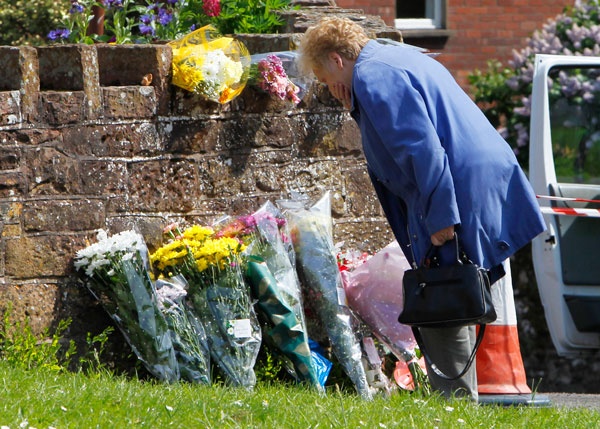Cumbria Shootings: Making Sense of the Senseless
A mass shooting in Britain leads a wounded community to wonder why. The director of Dart Centre Europe reflects on the story and offers resources for journalists.

The face of Derrick Bird has appeared across every major newspaper and news website in Britain ever since June 2, 2010, when this affable-looking man climbed into his car and drove for three hours along a necklace of villages, which wind along the Western fringe of Britain's Lake District. By the time Bird reached the end of his route in an isolated copse, he had shot and killed twelve people and injured eleven others, before turning the gun on himself.
When the United Kingdom woke up to digest the news, it was not just the appalling loss of life that framed the story, but its incongruity and the apparent senselessness of the 52-year old taxi driver's killing spree in a bucolic holiday destination.
Was Bird know to be be dangerous? Were his two guns legally held? Does Britain need a further tightening of its already strict firearm laws? These were the questions that many of the first articles asked.
One can imagine the chaos as the emergency services tried to make sense of the reports that were phoned in: a body lying in the street here, a sighting of a man with a gun there, locals and holiday-makers frantic to find a place of safety. And all this complicated by the starkly inaccessible West Cumbrian landscape and tightly coiled roads.
Several witnesses reported encountering Bird, gun in-hand, staring directly at them, then moving on in search of another target. All the way through the day, fresh details of his encounters emerged. Some of the killer's victims were known to him, others, the police believe, were chosen at random.
It is worth underlining the extreme rarity of such an event in the UK. As an editorial in this morning’s Guardian pointed out, single mass-shooting incidents "are not unknown... but they are so rare that each is deeply etched in the national memory." There was the murder of 17 people, mostly children, at Dunblane in 1996, and the killing of 16 people in Hungerford in 1987.
Gun crime is comparatively unusual in the UK: in England and Wales, just 39 people died from firearm-related injuries in 2008 and 2009. Britain has one of the toughest gun-control regimes in the world, second probably only to Japan. Given that background, it is not surprising that for many writing about this story, the "why" has has taken precedence over the "what."
Barry Walker, a local doctor, attended three of Bird's victims. Unable to help two who had died from gunshot wounds to the head, he waited with the third for two hours before an ambulance was able to get to the scene.
Speaking on BBC Radio 4's breakfast programme, the "why" was uppermost in his mind: "Why should this happy in a quite village like Seascale? It was a beautiful day..."
When asked what might help his community now, Dr. Walker described how a conversation with a colleague who is a consultant in palliative care had helped him to gain some insight. "She said that people need stories. And I think that is very true, people need to have a story... it won't take away the pain now, but it will help people to understand."
The media so far have approached this story by pulling the most readily accessible thread – Derrick Bird. It has been established that he had quarreled recently with colleagues and that there had been a family dispute over an inheritance; his victims include his twin brother and a local solicitor. But in the next few days, as more details emerge, more light will inevitably fall on the survivors and the families of the slain as the angle of the story changes.
Some relatives and friends will resent the intrusion, others may well see it as important that the focus moves away from the face of Derrick Bird and onto those they have lost. All will undoubtedly find talking challenging.
As always, journalists and news organisations have a great responsibility to handle this well. And this is something that will be relevant not just in the next few days, but through all the story’s subsequent stages: the inquest, a possible inquiry and those ever-difficult anniversaries.
Over the last few years, the Dart Centre has convened workshops and meetings with journalists who have worked on other notorious mass shootings, including the Port Arthur Massacre in Australia, the school shootings at Columbine and Virginia Tech in the States, Winnenden in Germany, Jokela and Kauhajoki in Finland.
These discussions have focussed on the practical craft questions. How might journalists most effectively and ethically approach victims and survivors; what kinds of coverage is likely to hinder a community's recovery and what makes reporting count as innovative and insightful?
In the hope that insight into other incidents might also be useful for journalists reporting on the Cumbrian story, we have included a list of resources.

































































































